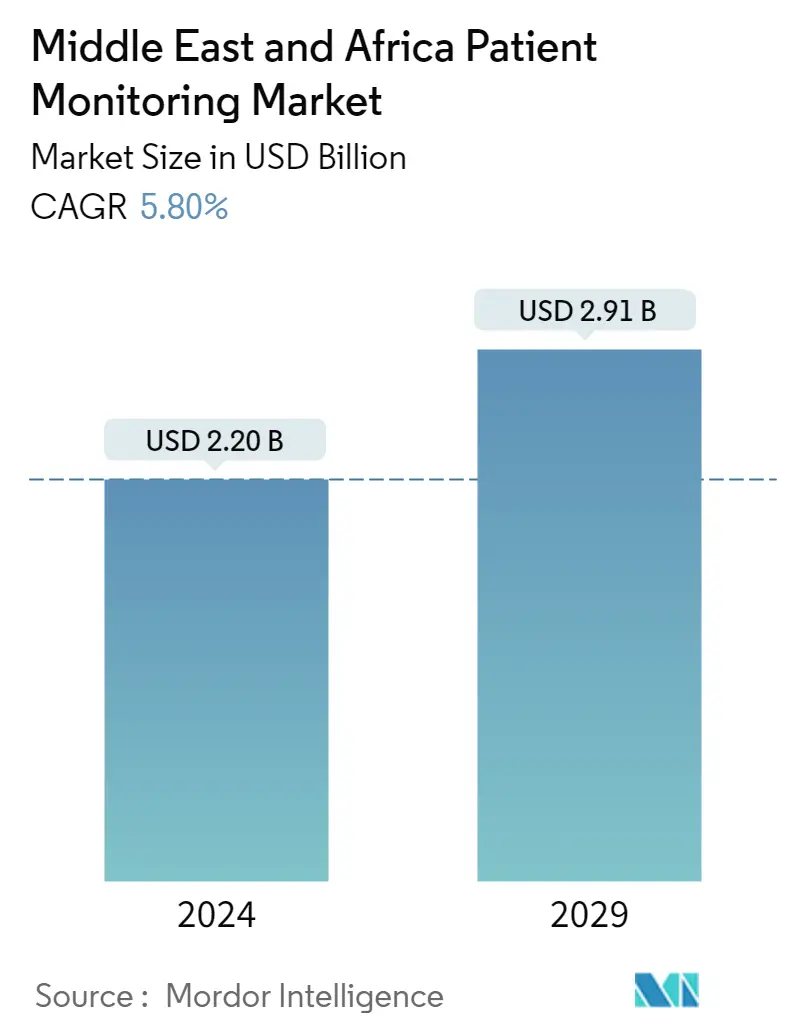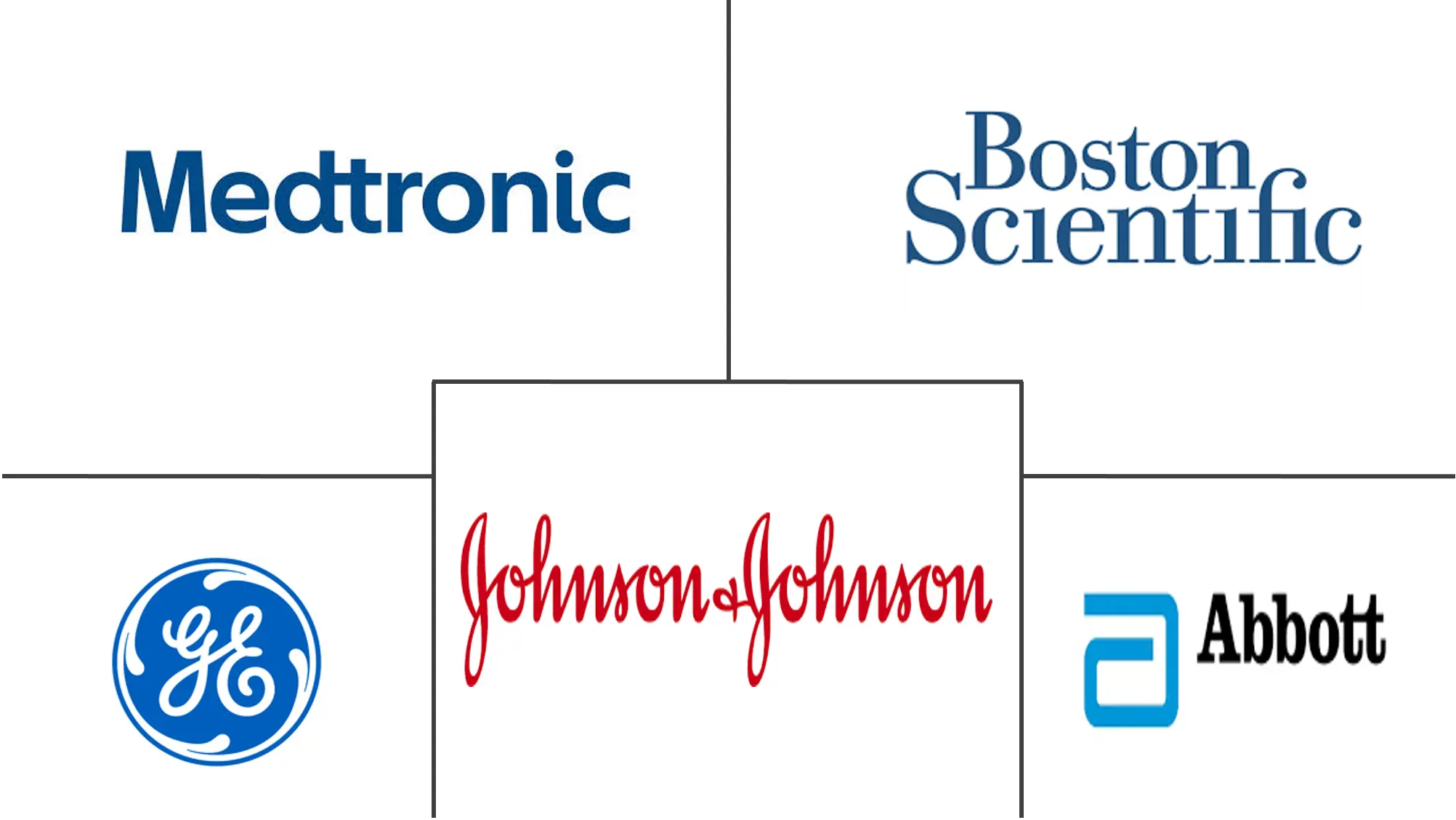Market Size of Middle East and Africa Patient Monitoring Industry

| Study Period | 2019 - 2029 |
| Base Year For Estimation | 2023 |
| Forecast Data Period | 2024 - 2029 |
| Market Size (2024) | USD 2.20 Billion |
| Market Size (2029) | USD 2.91 Billion |
| CAGR (2024 - 2029) | 5.80 % |
Major Players
*Disclaimer: Major Players sorted in no particular order |
Need a report that reflects how COVID-19 has impacted this market and its growth?
MEA Patient Monitoring Market Analysis
The Middle East and Africa Patient Monitoring Market size is estimated at USD 2.20 billion in 2024, and is expected to reach USD 2.91 billion by 2029, growing at a CAGR of 5.80% during the forecast period (2024-2029).
COVID-19 is expected to have a significant impact on the growth of the market. COVID-19 increased the demand for patient monitoring in the Middle East and Africa region owing to the restriction of patients' visits to the hospital. Government organizations provided various services to help monitor the condition of patients infected with COVID-19. For instance, in April 2020 the Saudi Ministry of Health launched an app aimed at monitoring the conditions of people suspected of having Coronavirus disease (COVID-19). Such government initiatives provided to monitor the condition of patients contributed to the growth of the market during the pandemic period. Also, during the post-pandemic period, the increasing adoption of patient monitoring in the Middle East and Africa region is expected to contribute to the growth of the market.
The key factors propelling the growth of the market are the rising burden of chronic diseases due to lifestyle changes, growth in the geriatric population, growing preference for home and remote monitoring, and ease of use and portability devices to promote growth. According to GLOBOCAN 2020, it was estimated that around 27,885 new cancer cases were reported in Saudi Arabia in 2020. Similarly, it was estimated that around 4,807 new cancer cases in the United Arab Emirates (UAE) and 3,842 new cancer cases were reported in Kuwait in 2020, respectively. With the high burden of cancer in the country, demand for effective treatment procedures also increases. This is ultimately helping in driving the biologics market growth in the GCC region. Also, according to the United Nations Population Fund's World Population Dashboard's Statistics 2021, in Kuwait, approximately 3.4% of the population of the country is aged 65 years and above. In addition, as per the World Population Ageing 2020 Report, in the United Arab Emirates, the population aged 60 years or above (thousands) in 2019 was 113 and the number is estimated to reach 1,679 by the year 2050. As the geriatric population is prone to suffer from various chronic diseases such as cardiovascular diseases, hypertension, diabetes, and others, are anticipated increase in population is expected to fuel the demand for the patient monitoring market.
Patient monitoring technologies identify small changes in the patient's physiological data, hence promoting self-monitoring. Thus, it reduces readmissions and prevents avoidable hospitalizations, decreases the number of unnecessary trips to the doctor's office, and reduces travel-related expenses. On a short- and long-term basis, by the proper implementation, patient monitoring technologies can expand access to quality healthcare and save time and money.
Thus the above-mentioned factors are expected to drive the demand for the growth of the market during the forecast period.
